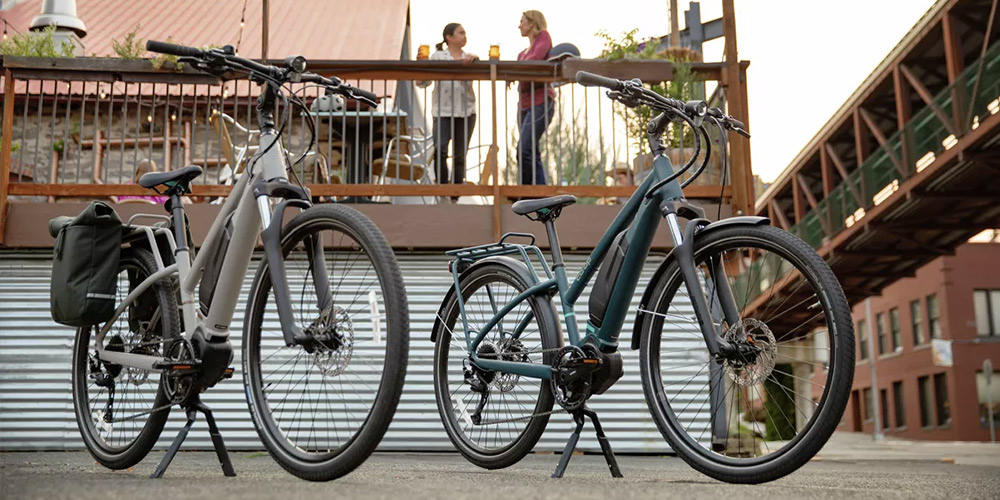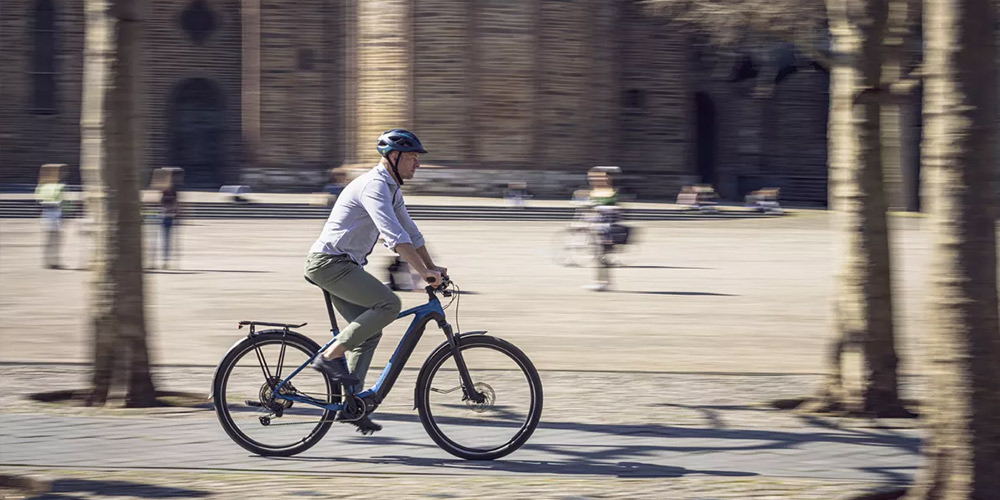Everything you need to know about getting an electric bike to ride farther, ride faster, tackle bigger hills, carry bigger loads, replace your car, save the planet, and get healthier.
Electric bicycles encounter resistance in some corners of the cycling world. Some people see them as a threat to all the wonderful diversity in the world of cycling today. There's no reason to be afraid though, electric bikes give more options to more people and they can be anything you want them to be.
The technology is exploding and access to electric bikes has never been more widespread. Every day a new electric bike brand comes out with something new and innovative. There are options at every price point and for every type of cycling. If you want to take a chance on something truly wild there are always new crowdfunding ideas. If you want to stick with an established brand even the oldest brands in the cycling world are jumping in with two feet. You could even expand where you look and find options backed by the biggest names in the automotive industry.
Things have gotten so hot in the electric bike space that even the US has started to adopt the idea. Europe and China have long been supporters of electric bikes but the US has lagged behind. Then last June year over year growth in the ebike category was at 190%. With that increase in adoption, there will come an increase in infrastructure and support.
Put in simple terms, the reason you should get an electric bike is because it's good for you. Not good for you in an eat-your-vegetables kind of way. It's good for you like few things in life actually are. The kind of good for you that's a lot of fun.
While it's true that it's more work to pedal a non-assisted bike, it turns out the extra assist means people go faster and ride longer. The difference in intensity isn't all that much either. When Brigham Young University put together a study(opens in new tab) comparing electric bikes and conventional bikes, they saw only a modest decrease in heart rate. When doing the same 6-mile loop there was only an average 10bpm difference between the two types of bikes.
Not only is there not much difference in intensity when using an electric bike but you don't need to be riding one for long to see improvements. A study from the University of Basel(opens in new tab) showed that just 4 weeks of three days a week commuting was enough to start seeing progress.
It's not cheating to ride an electric bike. It's actually going to get you fit and it doesn't take long to see improvements. If that's not enough motivation it's also worth noting that it will probably save you money to ride an electric bike.
Cars are expensive. They are expensive to buy and expensive to own. Even if you don't count the cost of the purchase price of your car you still have to pay for fuel, insurance, and maintenance. That all adds up and it adds up to a lot. The purchase price of an electric bike might seem like a lot but if you can trade car rides for bike rides you stand to save a lot of money.

How to find the right electric bike for you?
You're sold on the idea of an electric bike and you've checked out some of our buyer's guides but you are feeling super overwhelmed. The sheer number of options out there can definitely feel overwhelming but let's start simplifying.
Electric bikes are bikes. It's a good idea to remember that. Just like any bike, think about what your goals are and what you want to do with your bike. Are you trying to replace your car or are you riding for fun in addition to your car? Given the state of the technology right now there is an electric bike for everyone at this point. No matter how obscure your cycling passion might seem, you have company and there's a brand out there making a bike just for you.
One way to narrow down the electric bike that's right for you, regardless of your cycling goals, is to focus on the different build styles. That means where is the motor located? How much power is being delivered? In what style is that added power applied?
Motor location
The first thing to consider is where the motor is. It's the least consequential of the decisions you have to make. In fact, you might not be actually deciding anything since you are at the whim of the designers. It's good to understand though. There are three places you will find motors placed; in the bottom bracket where the pedals connect to the frame, in the front wheel hub, or in the rear wheel hub.
Speaking generally, the best electric bikes use a motor in the bottom bracket. It's not a hard and fast rule but the brands responsible for the best e-bike motors have traditionally focused on this location. The weight is down low providing the most balanced ride feel. It also means changing a flat tyre is no more difficult than any bike.
If the motor isn't in the bottom bracket area that means it's either in the front or rear wheel. A rear-wheel located motor is the more natural of the options since bicycles are inherently rear-wheel driven. There's no need to automatically dismiss front-wheel motors though. There are some advantages to this configuration. The weight balances with the weight of your body and it's the simplest way to implement an electric bike drivetrain. The disadvantage is that the power delivery comes from a location that isn't natural in a bike.
Power application
After considering the motor location the next thing to think about is power delivery. What is the feel of the added power? The primary driver of this ride feel is the type of sensor used for applying power. The two options are a torque-based sensor or a cadence-based sensor. A torque-based sensor applies power based on how hard you push the pedals. It's a more natural feeling ride but it requires more work from the rider. On the other hand, a cadence-based sensor checks to make sure you are pedaling then adds power based on the chosen assist level. They can make riding an electric bike very easy and some people prefer them.
Speaking of power delivery, what about electric bike classes? In the US there are three classes of electric bikes. This designation isn't recognized in every state and there is a patchwork of what the classes mean. The three classes are the most widely used designations though so it's a good place to start and just double check your local regulations. the basic breakdown is:
Class 1: The motor only operates when you pedal and it turns off at 20 mph.
Class 2: Is the same as class 1 but adds a throttle.
Class 3: Again, it's like class 1 but the motor continues to help up to 28 mph.
Beyond those basic classes you can also commonly find mix and match configurations. For example, class 3 bikes often also feature a throttle that works up to 20 mph. The regulations in Europe are a lot simpler. Electric bikes with a motor of less than 250 watts, that only work with pedal assist, and with assistance that tops out at 25 km/h are bicycles. There are classes for more powerful bikes but they require registration and insurance in most cases.

What goes with my electric bike?
Electric bikes are heavier and faster than other bikes. That extra speed and weight means that every accessory needs extra consideration. At the same time, they are still bikes so anything you might want for riding other bikes applies to electric bikes.
Safety is an excellent place to consider the different needs of an electric bike. Electric bikes are faster than other bikes and that means drivers can make extra mistakes. The typical visual cues that signify a fast-moving cyclist aren't always there and 28mph is fast for a bike. If things go badly, make sure you've got a great helmet.
It's also a good idea to have a front and rear light. Most electric bikes include them but not all of them. Even if there is lighting included, is it enough for what you need? An extra daytime light might be a good idea if the lights included have a focus on nighttime vision for the rider. Flip that and if the bike has integrated lights meant to make the rider more visible you might want extra lights at night. Make sure you can see where you are going at the high rate of speed electric bikes are capable of.
Safety isn't the only place you have to think differently when it comes to electric bikes. The extra weight means electric bikes are more difficult to store and transport. While a featherlight road bike is easy to hang, the electric bike you choose might need to be the folding kind to make it fit. If you plan on transporting your electric bike make sure the rack you choose is up to the task. Are you able to lift the heavier bike onto the rack? Does the rack accommodate the weight of the bike?